
EDCI 337: Multimedia Design Project
Darby Peterson & Sarah Hiscox
This lesson is intended for a grade 3 audience. Some learners may require additional support in completing the lesson and accessing some of the resources and interactive tools.
Overview
This week, we will build on our knowledge of fractions and consider fractions in our everyday lives. Some examples of everyday fractions include:
- Splitting a pizza at a restaurant into halves, thirds, or quarters
- Determining the cost of an item if it is half price
- Figuring out how much of certain ingredients you will need while cooking and baking
- Looking at time – half an hour and quarter past are common ways to talk about the time
To help us understand many of the fractions around us – we will watch videos, play games, and even make our own recipes.
Let’s dig in!
Lesson Objectives
By the end of the week you will be able to:
- Understand fractions as a part of a group, number, or whole.
- Identify the difference between a numerator and a denominator.
- Use various recognizable objects to identify fractions.
- Identify 1/2, 1/3, and 1/4 represented in multiple forms.
- Apply fractions to an everyday activity.
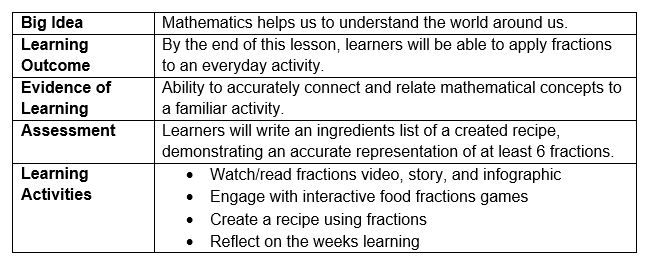
Read/Watch – Let’s Learn
Watch: All About Fractions for Kids – Free School (2:26 mins) – Let’s learn basic fractions and common fraction terms in this video.
Watch: Fractions! | Mini Math Movies | Scratch Garden (6:41 mins) – Great introduction to fractions featuring everyday examples and equal share problems.
Read aloud & play-along: Emma’s Fractions (5 mins) –Let’s play along with Emma as she learns how to use repeated halving to break whole numbers into equal parts
Content – Let’s Play!
Now that we’ve seen some examples of fractions in everyday life, lets build on that learning with the help of food!
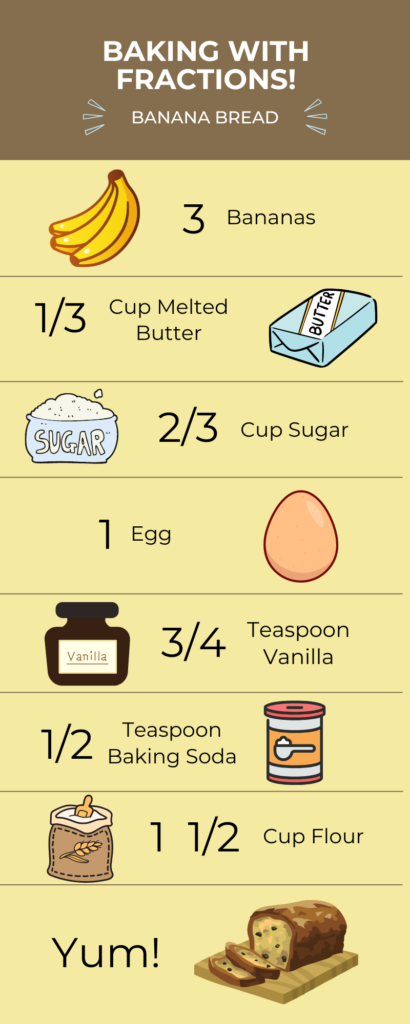
Fractions in Baking
Fractions are included in most baking recipes – from measuring ingredients to determining serving sizes.
Have a look at the Banana Bread Recipe:
- How many fractions do you see?
- For the butter: which number is the numerator and which number is the denominator? What about the sugar?
- Notice how the amount of each ingredient or the fraction is written before the words in a recipe?
Matching Fractions
Below are four fractions that are shown in the recipe above. See if you can match the number to the picture representation of each fraction.

Fractions Pizzeria
Click on the button below and use fractions to make a delicious pizza for you and your friends. Buon appetito!
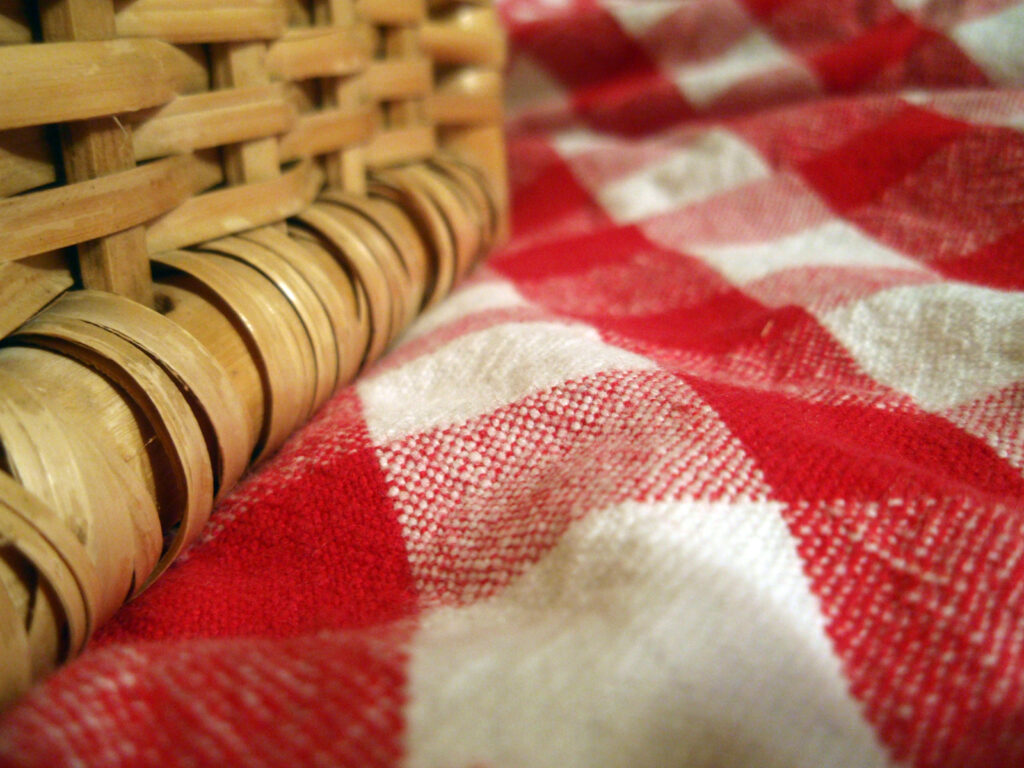
Geometry Picnic: Halves, Thirds and Quarters
Food has been packed up for a picnic. It is up to you to determine which fruits and veggies are cut into halves, thirds, and quarters!
Making Our Own Recipes!
Now that we have a deeper understanding of the many fractions around us, let’s use fractions to create our own recipes!
Use the videos and infographic above to help guide you through the process of writing your own recipe.
Your recipe can be whatever you want (cookies, meatballs or even cotton candy stew – have fun with it!)
Feel free to use the template below or create your own. You can add pictures of the ingredients if you wish, but it is not necessary.
I am excited to see what you all come up with!
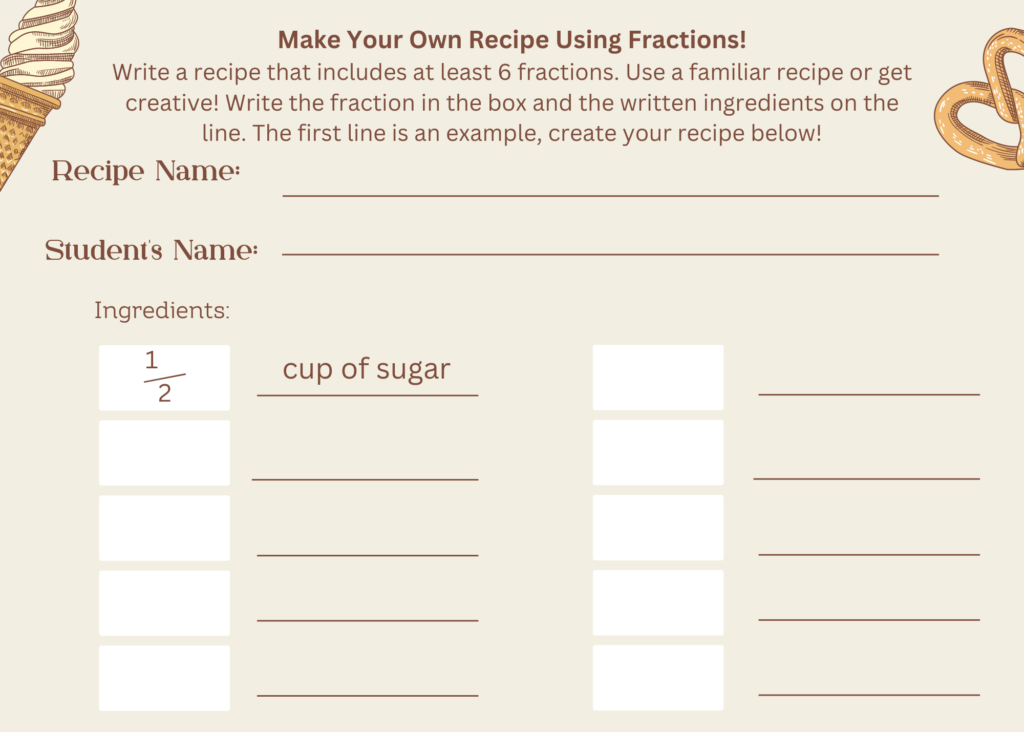
Let’s Reflect
- When you played around with fractions this week, was there anything that surprised you or you found difficult?
- Have you created your own recipe before? If so, did it contain fractions?
- Do you think that all recipes contain fractions?
- Can you think of an example of fractions in your everyday life that we did not learn this week?
To Do This Week
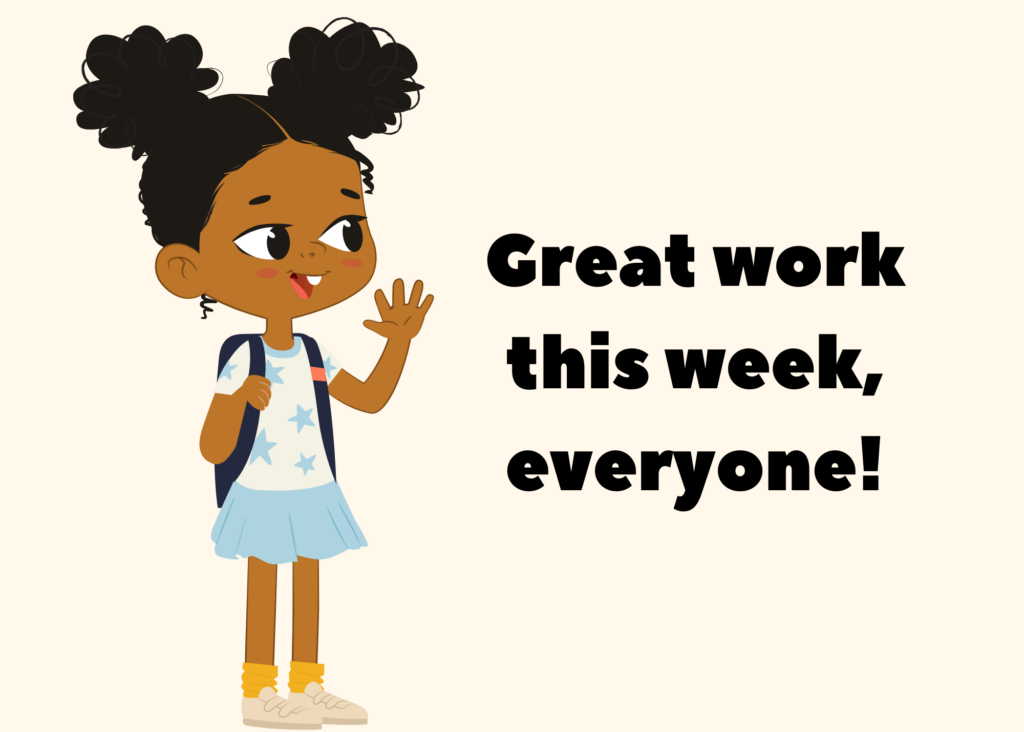
- Complete the Read/Watch activities
- Complete the Let’s Play activities
- Complete the recipe activity *If you decide to make the recipe at home – please share a picture with the class!
- Consider at least one example of a fraction(s) in your everyday life. Share this with your family or a friend.
Theories and Principles Guiding Our Lesson
Merill’s First Principles of Instruction
- Learning is promoted when learners are engaged in solving real world problems – We focus our lesson on the relevancy of fractions in our everyday lives and how understanding them can aid in meaningful skills such as baking and cooking. Discussing authentic problems helps to keep learners engaged.
- Learning is promoted when relevant previous experience is activated – Our lesson builds on our learners previous knowledge of numbers, counting, and breaking a whole into smaller components. Our Read/Watch activities contain introductory videos Fractions! | Mini Math Movies | Scratch Garden and All About Fractions for Kids – Free School that discuss the concept of having parts of a whole and necessary mathematical terminology so that learners have a foundation of knowledge to build on later in the lesson. Our introductory video also reminds learners of important terminology to reinforce prior knowledge before beginning the lesson.
- Learning is promoted when the instruction demonstrates what is to be learned – Our lesson includes multiple representations of the concept of fractions and includes a demonstration in the form of an infographic that models what is expected of them in their final assessment.
- Learning is promoted when learners are required to use their new knowledge or skills to solve problems – Practice problems are presented throughout our lesson allowing learners to have a chance to receive feedback and learn from errors. We integrate practice problems using H5P into a YouTube read-aloud story, and created a H5P matching game where learners can match numerical and visual representation of fractions. We also included a twine branching story, A Fractions Pizza Game! and an online game we found Geometry Picnic: Halves, Thirds, Quarters, to allow learners multiple different forms of practice.
- Learning is promoted when learners are encouraged to integrate the new knowledge or skill into their everyday life – The learners will demonstrate their knowledge through the summative assessment – creating a recipe using fractions. This allows them to create something that is personal and meaningful to them as well as apply their new skill in the future.
Mayer’s Theory of Multimedia Learning
We minimize extraneous cognitive load for learners by organizing our lesson with clear and bold headers above structured and relevant information. The multimedia content that requires engagement also has clear directions regarding its functionality. The coherence principle is applied by including resources and activities that pertained to our topic and excluding unnecessary information. Following the signaling principle also ensures that essential material is easy to find and access with clear headers and highlighted hyperlinks.
Constructive alignment & Backwards design
We determined our “Big Idea” and intended “Learning outcomes” first before determining an assessment activity and designing multimedia content to prepare learners for assessment. We want learners to grasp that mathematics can help us understand the world around us with the outcome of this learning being that learners will be able to apply the concept of fractions to an everyday activity. To assess this, we ask learners to create a recipe that involves fractions. To prepare them, we included resources that would introduce them to fractions, show how fractions are relevant in everyday life, allow them to engage with fractions through practice questions and games and demonstrate an example of an existing recipe through the use of an infographic. With the outcomes and goals pre-determined, resources and multimedia content were created to include only the information needed for students to meet those goals.
Accessibility was important when creating our lesson. Our introductory video contains properly edited captions as well as a transcript. All images presented in our lesson include associated alternative texts, and our clickable buttons to linked activities are high in contrast against the white background. Designing lessons with these aspects in the forefront helps to reduce barriers and ensures the lesson is accessible to all learners.
Passive learning is used in the form of short introductory videos to lay foundational knowledge in our read/watch section, but the bulk of the lesson requires active learning as learners engage with the website, videos, and games. This also follows scaffolding as learners are building upon prior knowledge and working through concepts on their own to help them apply their learning to the summative assessment. Throughout the entire lesson, learners will not only deepen their understanding of fractions, but also their relevance to the world around them.
References
Adobe (2020). 8 basic design principles to help you make awesome graphics. Adobe Express. Retrieved from: https://www.adobe.com/express/learn/blog/8-basic-design-principles-to-help-you-create-better-graphics
Banana Bread Recipe retrieved from: https://content.nroc.org/DevelopmentalMath/U02PROJECT_RESOURCE/index.html?bypassrewrite=true
GCU. (2022). What is Scaffolding in Education? Retrieved from: https://www.gcu.edu/blog/teaching-school-administration/what-scaffolding-education
Greenwood, J. (n.d.). Merrill’s First Principles of Instruction. James Greenwood. https://www.james-greenwood.com/instructional-design/toolkit/merrill/#:~:text=The%20premise%20of%20Merrill%E2%80%99s%20first%20principles%20of%20instruction,principles%20are%20necessary%20for%20effective%20and%20efficient%20instruction.%E2%80%9D%28p44%29
Identifying Fractions with Pictures. (n.d.). K5 Learning. https://www.k5learning.com/free-math-worksheets/second-grade-2/fractions/identify-picture
Jungles, A. & Patel, C. (2019). MOOC INCLTEACH1x. What is Universal Design for Learning? Retrieved from: https://www.youtube.com/watch?v=pdmoBl3Z75I
Learning House. (2019). Multimedia learning principles – wiley. Retrieved September 7, 2022, from https://ctl.wiley.com/wp-content/uploads/2016/07/MultimediaPrinciples_Summary.pdf
Monterey Institute for Technology and Education. (n.d.). Project Based Learning Activity: Let’s Get Cooking! https://content.nroc.org/DevelopmentalMath/U02PROJECT_RESOURCE/index.html?bypassrewrite=true
Moore, S. (2019). Backwards Design: A great way to move forward! Retrieved from: https://www.youtube.com/watch?v=mLKHaNo98Ts
Watt (2022). W-2: How Do We Learn? Retrieved from: https://edtechuvic.ca/edci337/2022/08/29/w2-how-do-we-learn/
Watt (2022). W-4: Accessibility and Equity. Retrieved from: https://edtechuvic.ca/edci337/2022/09/25/w4-accessibility-and-equity/
Watt (2022). W-6: Instructional Design and Lesson Planning. Retrieved from: https://edtechuvic.ca/edci337/2022/10/07/w6-instructional-design-and-lesson-planning/
Watt (2022). W-9: Active and Passive Learning. Retrieved from: https://edtechuvic.ca/edci337/2022/10/29/w9-active-and-passive-learning/